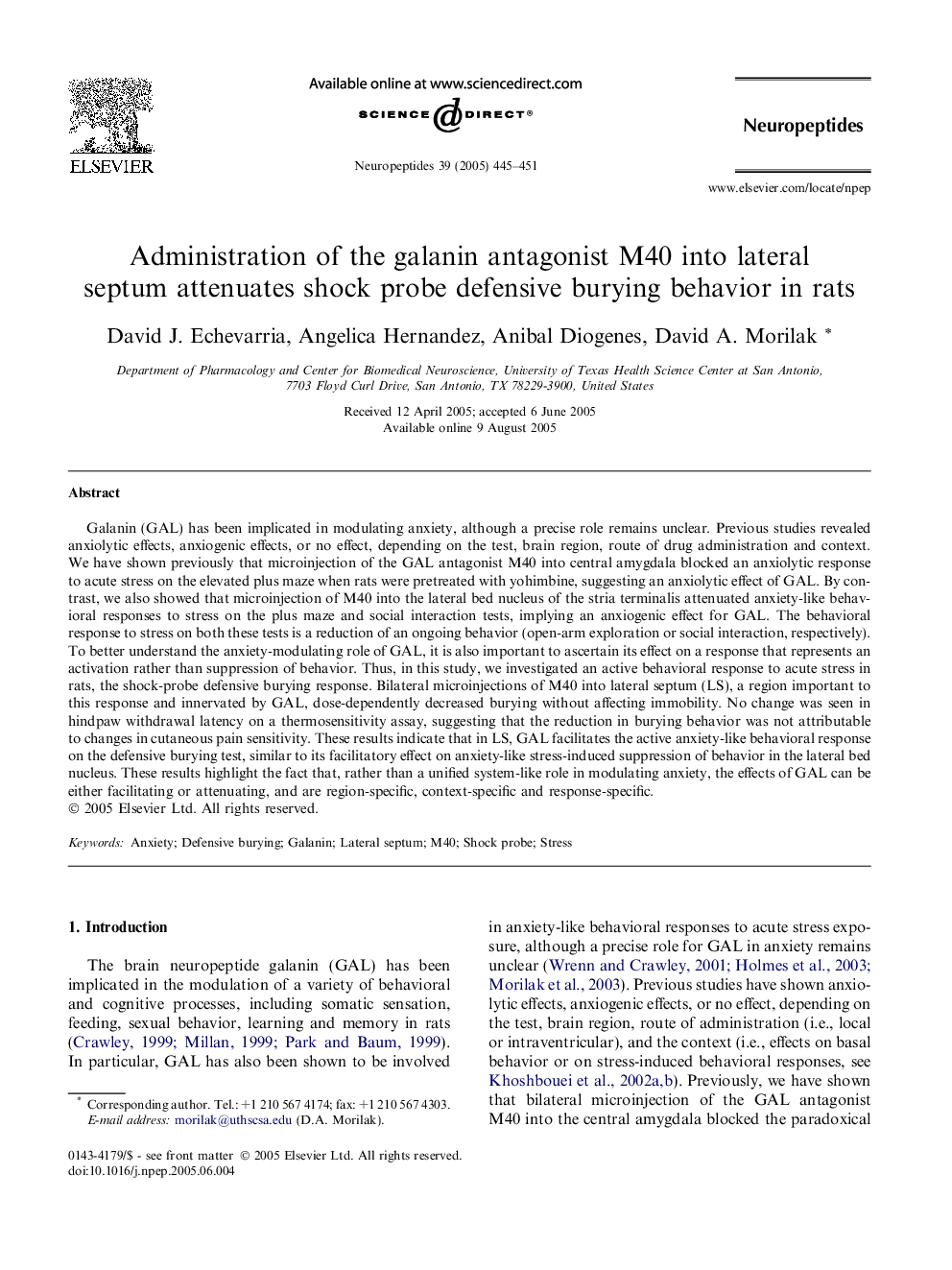| Article ID | Journal | Published Year | Pages | File Type |
|---|---|---|---|---|
| 9118741 | Neuropeptides | 2005 | 7 Pages |
Abstract
Galanin (GAL) has been implicated in modulating anxiety, although a precise role remains unclear. Previous studies revealed anxiolytic effects, anxiogenic effects, or no effect, depending on the test, brain region, route of drug administration and context. We have shown previously that microinjection of the GAL antagonist M40 into central amygdala blocked an anxiolytic response to acute stress on the elevated plus maze when rats were pretreated with yohimbine, suggesting an anxiolytic effect of GAL. By contrast, we also showed that microinjection of M40 into the lateral bed nucleus of the stria terminalis attenuated anxiety-like behavioral responses to stress on the plus maze and social interaction tests, implying an anxiogenic effect for GAL. The behavioral response to stress on both these tests is a reduction of an ongoing behavior (open-arm exploration or social interaction, respectively). To better understand the anxiety-modulating role of GAL, it is also important to ascertain its effect on a response that represents an activation rather than suppression of behavior. Thus, in this study, we investigated an active behavioral response to acute stress in rats, the shock-probe defensive burying response. Bilateral microinjections of M40 into lateral septum (LS), a region important to this response and innervated by GAL, dose-dependently decreased burying without affecting immobility. No change was seen in hindpaw withdrawal latency on a thermosensitivity assay, suggesting that the reduction in burying behavior was not attributable to changes in cutaneous pain sensitivity. These results indicate that in LS, GAL facilitates the active anxiety-like behavioral response on the defensive burying test, similar to its facilitatory effect on anxiety-like stress-induced suppression of behavior in the lateral bed nucleus. These results highlight the fact that, rather than a unified system-like role in modulating anxiety, the effects of GAL can be either facilitating or attenuating, and are region-specific, context-specific and response-specific.
Related Topics
Life Sciences
Biochemistry, Genetics and Molecular Biology
Endocrinology
Authors
David J. Echevarria, Angelica Hernandez, Anibal Diogenes, David A. Morilak,
